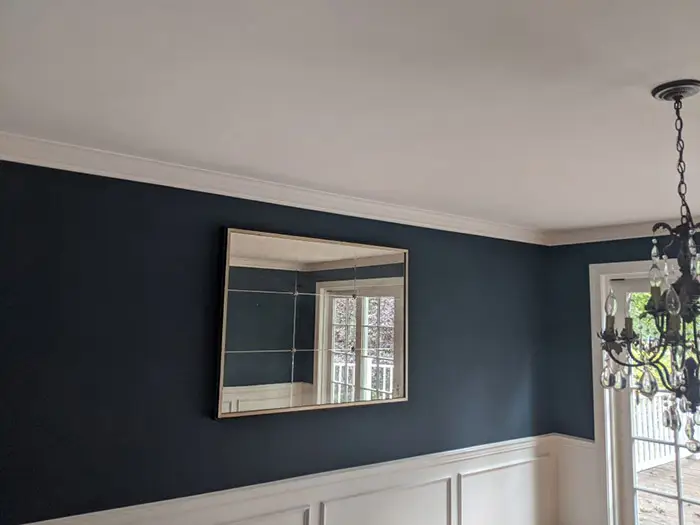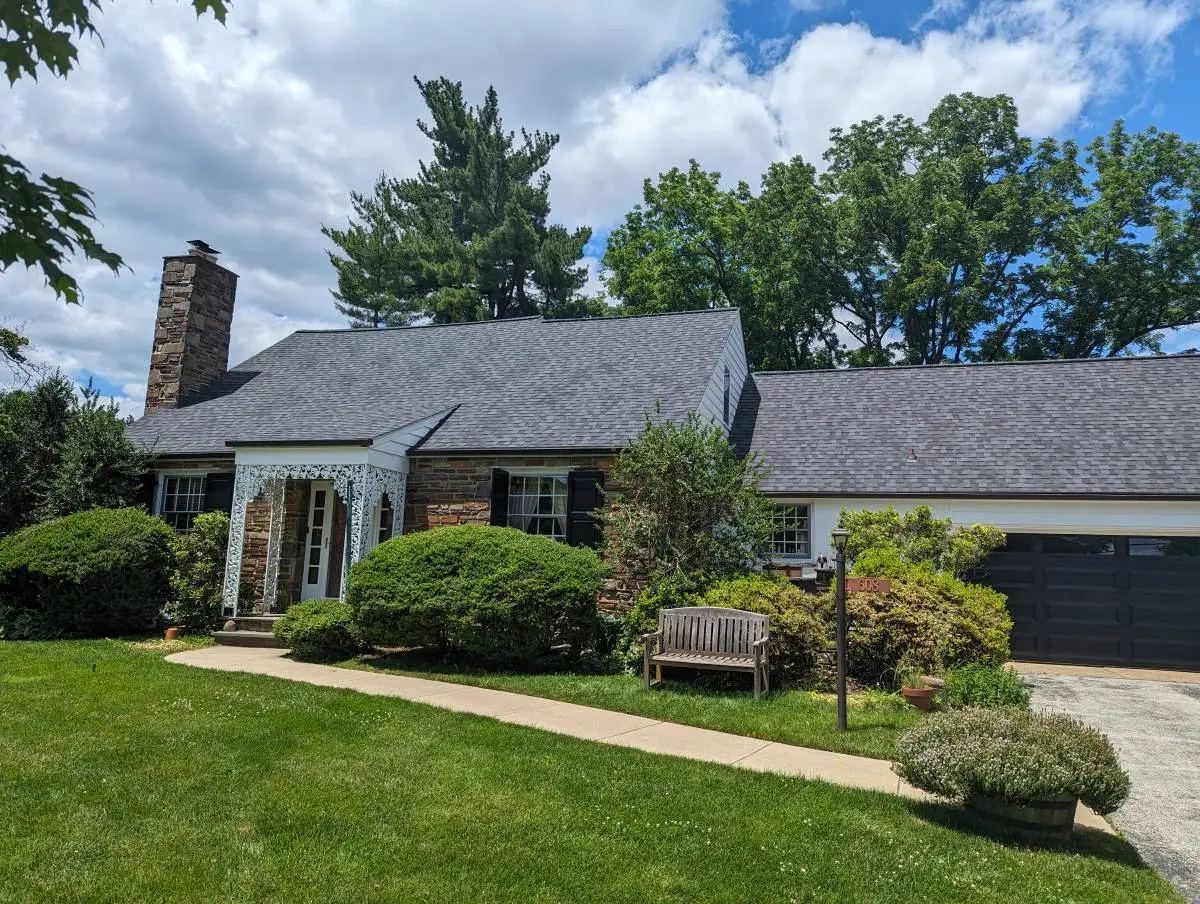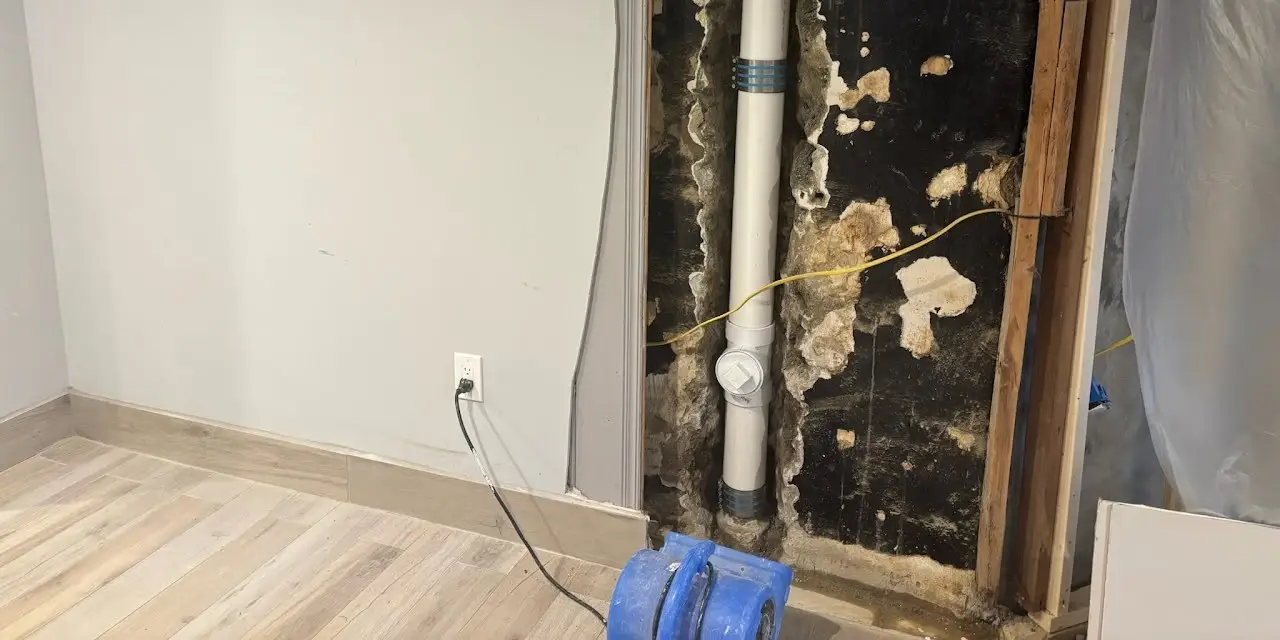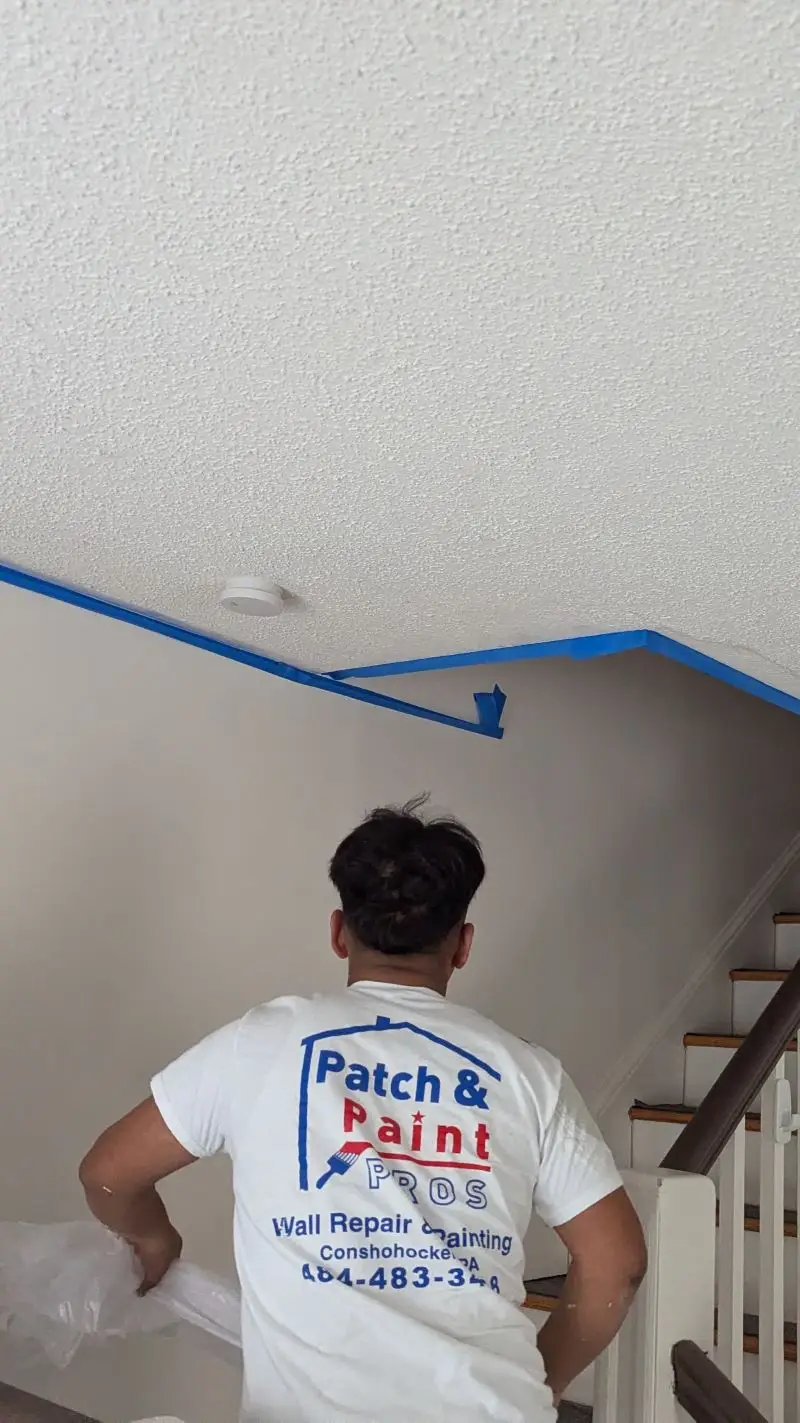Are you frustrated with the uneven paint application on your walls? Don’t worry, you’re not alone. Many homeowners face this issue when attempting to paint their own interiors. Fortunately, there are expert solutions from interior painters that can help you achieve a smooth and even finish.
In this article, we’ll explore the causes of uneven paint application and provide tips for proper surface preparation, choosing the right tools and paints, and applying paint evenly. We’ll also cover troubleshooting techniques in case you encounter any issues during your painting project. With these expert solutions, you’ll be able to transform your space with a professional-looking paint job that will leave your guests impressed.
Understand the Causes of Uneven Paint Application
Don’t panic if your freshly painted walls resemble a patchwork quilt; understanding the causes of uneven paint application can help you avoid a similar outcome in the future. One of the most common mistakes that lead to uneven paint application is improper surface preparation. Before painting, it’s essential to clean and sand any rough spots or bumps on the wall. This ensures that the paint adheres uniformly and provides an even finish.
Another factor that contributes to uneven paint application is using low-quality brushes or rollers. Investing in high-quality tools will save you time and money in the long run by providing better coverage with fewer coats of paint. Lastly, prevention techniques like taking breaks during painting sessions can help minimize drips and streaks caused by overworking sections of the wall. With these tips in mind, you’ll be one step closer to achieving a beautifully painted space without any unwanted patchiness.
Proper Surface Preparation
Ensuring your surfaces are properly prepped is crucial for achieving a flawless finish that will make you proud to show off your space. One of the most common mistakes people make when painting is not properly preparing the surface before applying paint. This can lead to uneven application and an unsatisfactory end result. To avoid this, start by cleaning the surface with soap and water, then sand it down using fine-grit sandpaper until it’s smooth and any imperfections are removed.
When sanding, it’s important to use the correct technique to avoid damaging the surface or creating more imperfections. Use light pressure and long strokes in one direction, working from top to bottom. Don’t press too hard or use circular motions which can create scratches or grooves in the surface. After sanding, wipe down the surface with a damp cloth to remove any dust or debris before painting. By taking these steps to properly prep your surface, you’ll be on your way to achieving a beautiful, even paint job that you can be proud of for years to come.
Choosing the Right Paint and Tools
To achieve a professional-looking paint job in your home, you’ll need to choose the right tools and paint. Here are some tips to help you get started:
- Paint Quality: Invest in high-quality paint that will provide good coverage and durability. Cheaper paints may require more coats and can wear down faster over time.
- Brush Size: Choose the right brush size for the job. A smaller brush is better for trim work, while a larger brush is ideal for painting large surfaces.
- Primer Application: Don’t skip the primer! Applying a coat of primer before painting can help ensure even coverage and improve adhesion.
- Sanding: Properly sanding your walls or furniture before painting can help create a smooth surface for the paint to adhere to.
- Tools: Make sure you have all the necessary tools on hand, such as rollers, brushes, drop cloths, and painter’s tape.
By following these tips and choosing quality materials, you’ll be well on your way to achieving a flawless finish on your next painting project.
Applying Paint Evenly
To achieve a smooth and even coat of paint, it is essential to master proper brushing and rolling techniques. By using the right tools and applying the correct pressure, you can easily avoid uneven application and drips. Additionally, allowing adequate drying time between coats is crucial for achieving professional-looking results.
Brushing Technique
Improving your brushing technique can be a game-changer when it comes to achieving smooth, even paint application on your walls. Brushing mistakes and common errors can lead to an uneven finish and unsightly brush marks. But don’t worry, there are some simple techniques that professional painters use to ensure a flawless result.
Firstly, avoid overloading your brush with too much paint. This is one of the most common mistakes that DIY painters make. Too much paint on your brush can cause drips and splotches, which will ruin the texture of your walls. Instead, dip only the bristles of your brush into the paint and tap off any excess before applying it to the wall in long strokes. Secondly, maintain a consistent pressure throughout each stroke and keep a wet edge as you work across the surface. This means overlapping each previous stroke slightly with every new one to prevent any lines from forming once the paint dries. By following these expert brushing techniques, you’ll achieve a perfectly even coat of paint with no unsightly blemishes or mistakes!
Rolling Technique
Mastering the rolling technique for painting your walls can make a significant difference in achieving a smooth and flawless finish. One important factor to consider is the rolling pressure you apply on the roller. Too much pressure can cause uneven paint application, while too little may not leave enough paint on the surface. The key is to find the sweet spot where there’s just enough pressure to transfer an even coat of paint without leaving any ridges or streaks.
Another crucial aspect is ensuring that your paint consistency is right for rolling. If your paint is too thick, it will be hard to spread evenly with a roller, resulting in unsightly bumps and clumps. On the other hand, if it’s too thin, it may drip or splatter when applied with a roller. To achieve the perfect consistency, check with your local hardware store or read manufacturer instructions carefully before application. With these expert tips in mind, you’ll be able to master the rolling technique and achieve professional-looking results every time!
Proper Drying Time
Once you’ve finished painting, wait patiently for the paint to dry completely before touching or moving anything in the room. This is crucial to avoid uneven application and prevent any smudging or smearing on the surface. Rushing this step could ruin all your hard work and result in a less than satisfactory finish.
Here are some common mistakes people make when it comes to drying time, along with some quick fixes:
- Impatience: It can be tempting to touch up areas that appear dry but haven’t fully cured yet. However, doing so can cause brush or roller marks and create an uneven texture.
- Quick fix: If you have to touch up any spots, use a light touch with a small brush to blend them into the surrounding area. Only do this when absolutely necessary.
- Humidity: High humidity levels can prolong drying time and cause paint to peel or bubble.
- Quick fix: Use a dehumidifier or air conditioner to reduce humidity levels in the room while painting. Alternatively, choose a low-humidity day for your project.
- Insufficient ventilation: Lack of airflow can also slow down drying time and lead to an uneven finish.
Troubleshooting Uneven Paint
If you’re facing problems with uneven paint, fret not – there are solutions available to help you attain a smooth finish. One common error people make is neglecting to thoroughly mix the paint before application. This can lead to inconsistent color and texture across the walls. To rectify this mistake, make use of a stir stick or drill attachment to ensure the paint is well-mixed, resulting in a uniform consistency.
Another mistake is applying paint that is either too thin or too thick. If the coat is too thin, it will appear streaky and patchy. Conversely, if it’s too thick, it may drip and create an uneven surface. To address this issue, it’s important to apply an adequate amount of paint to completely cover the area, while avoiding overloading your brush or roller. Additionally, always begin with thin coats and gradually increase thickness as necessary for proper coverage. By adhering to these guidelines, you’ll be able to troubleshoot any unevenness on your painted surfaces and achieve a professional-looking outcome!
If you require painting services for your home or office, it’s essential to consider the type of paint you’ll be using. Latex paint, for instance, is a popular choice due to its durability, ease of application, and quick drying time. Different paint types have varying characteristics and purposes, so it’s advisable to consult a professional or conduct research to determine the most suitable paint type for your specific project.
When calculating the cost of painting, several factors come into play. One important consideration is the square footage of the area to be painted, as this will determine the amount of paint required. The average cost of painting services can also vary depending on factors such as the complexity of the project, the type of paint selected, and the region in which you reside. It’s advisable to obtain quotes from multiple painters to compare prices and ensure you’re getting a fair estimate for the desired work.
Furthermore, if you’re looking to add a touch of visual interest to your space, consider incorporating an accent wall. This is a single wall that is painted differently from the surrounding walls, often with a contrasting color or texture. An accent wall can create a focal point in a room and add depth and character to the overall design.
Final Thoughts
Now that you understand the causes of uneven paint application and how to properly prepare surfaces, choose the right paint and tools, and apply paint evenly, it’s time to troubleshoot any issues you may encounter. If you notice streaks, drips, or other inconsistencies in your paint job, don’t panic. Instead, take a step back and assess the situation.
Consider whether the issue is related to the surface preparation or if there are other underlying factors at play. Once you have identified the problem area(s), use the tips and techniques provided by interior painters to fix them. With a little patience and care, you can achieve a beautiful and even paint finish that will enhance the look of your home for years to come.





